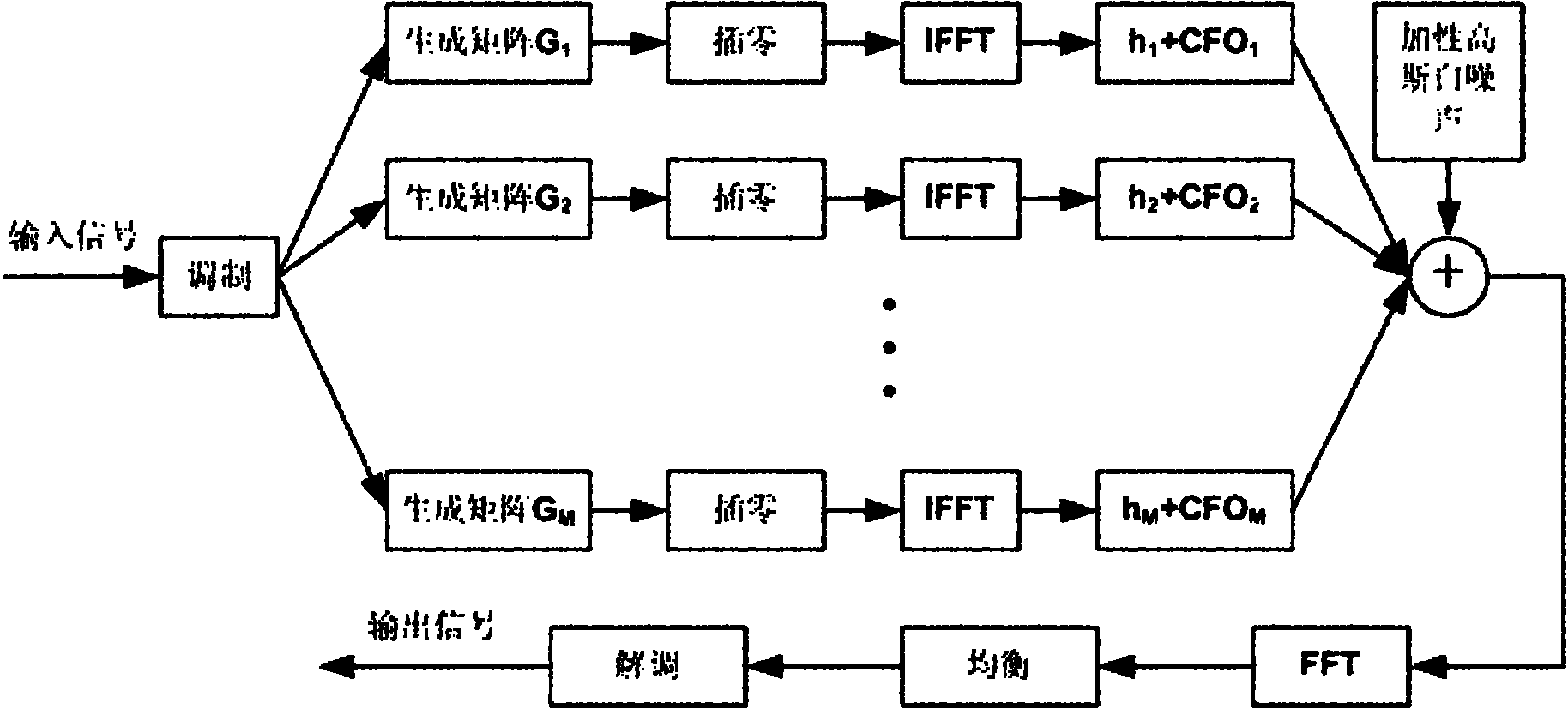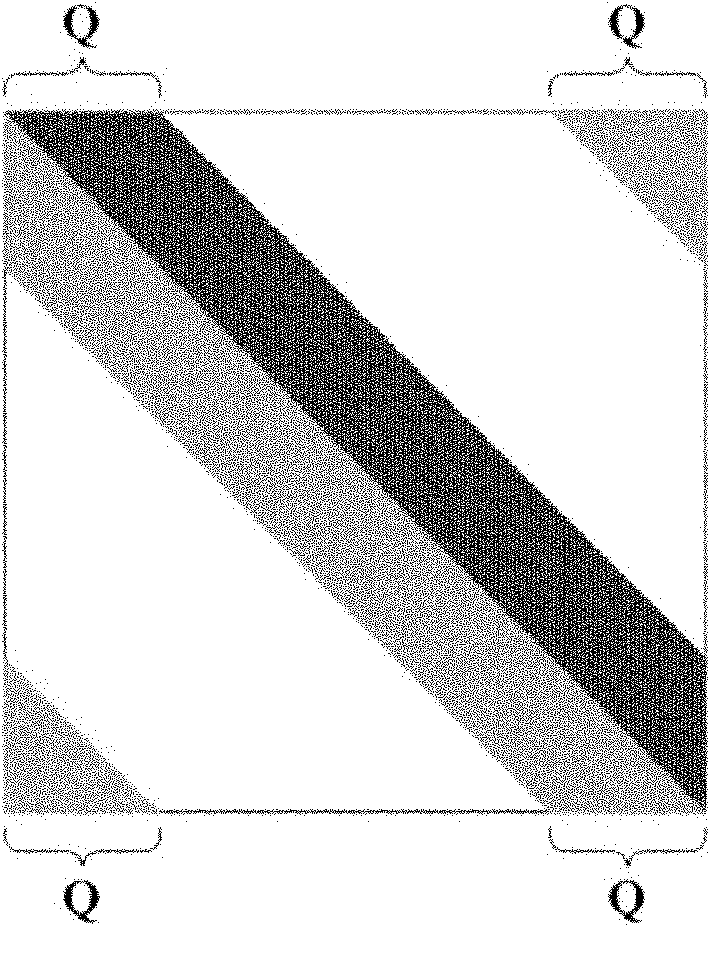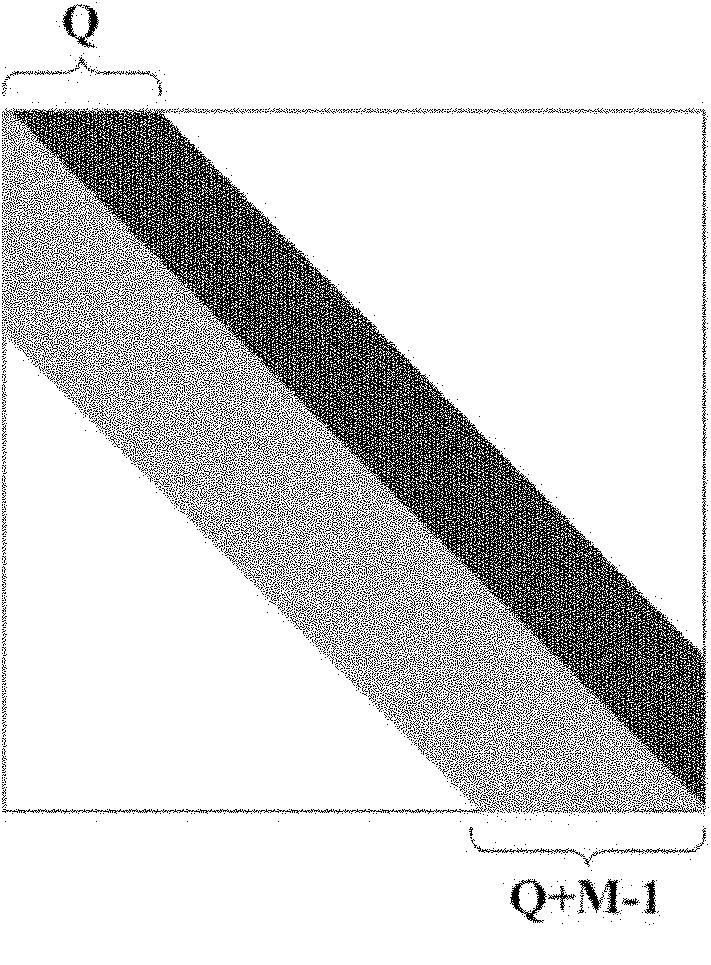LDLH matrix decomposition-based band-limited block minimum mean squared error (MMSE) equilibrium method
An equalization method and matrix decomposition technology, applied in baseband system components, shaping network in transmitter/receiver, etc., can solve problems such as inter-carrier interference and compensation difficulties, and achieve good system performance and low computational complexity Effect
- Summary
- Abstract
- Description
- Claims
- Application Information
AI Technical Summary
Problems solved by technology
Method used
Image
Examples
Embodiment Construction
[0020] Below in conjunction with example the utility model is described further.
[0021] Assume that the length of the data block transmitted by the channel is N, and the length of the zero vector inserted at both ends of the coded vector is D, according to figure 1 The schematic diagram of the cooperative communication system model structure based on DFLC-SFC codewords is shown. After FFT processing, the expression of the received signal transformed from the time domain to the frequency domain is shown in Equation 1:
[0022] y = Fr = Σ r = 1 R h r FE ( φ r ) F H x ‾ r + n Formula 1
[0023] = Σ r ...
PUM
 Login to View More
Login to View More Abstract
Description
Claims
Application Information
 Login to View More
Login to View More - R&D
- Intellectual Property
- Life Sciences
- Materials
- Tech Scout
- Unparalleled Data Quality
- Higher Quality Content
- 60% Fewer Hallucinations
Browse by: Latest US Patents, China's latest patents, Technical Efficacy Thesaurus, Application Domain, Technology Topic, Popular Technical Reports.
© 2025 PatSnap. All rights reserved.Legal|Privacy policy|Modern Slavery Act Transparency Statement|Sitemap|About US| Contact US: help@patsnap.com



